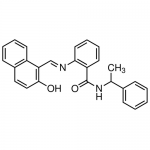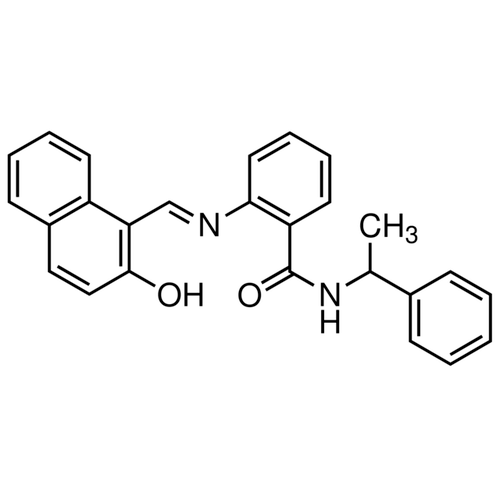| Product Name | Sirtinol |
| Description |
SIRT inhibitor |
| Purity | >98% |
| CAS No. | 410536-97-9 |
| Molecular Formula | C26H22N2O2 |
| Molecular Weight | 394.47 |
| Field of Use | Not for use in humans. Not for use in diagnostics or therapeutics. For in vitro research use only. |
Properties
| Storage Temperature | -20ºC |
| Shipping Temperature | Shipped Ambient |
| Product Type | Inhibitor |
| Solubility | Soluble to 100 mM in DMSO |
| Source | Synthetic |
| Appearance | Off-white to yellow crystals |
| SMILES | [C@@H](NC(=O)C1=CC=CC=C1NC=C/3C2=CC=CC=C2C=CC3=O)(C4=CC=CC=C4)C |
| InChI | InChI=1S/C26H22N2O2/c1-18(19-9-3-2-4-10-19)28-26(30)22-13-7-8-14-24(22)27-17-23-21-12-6-5-11-20(21)15-16-25(23)29/h2-18,27H,1H3,(H,28,30)/b23-17- |
| InChIKey | YUGODMKHHCZZOI-QJOMJCCJSA-N |
| Safety Phrases |
Classification: Caution. Substance not yet fully tested. Safety Phrases: S22 - Do not breathe dust S36/37/39 - Wear suitable protective clothing, gloves and eye/face protection S24/25- Avoid contact with skin and eyes |
| Cite This Product | Sirtinol (StressMarq Biosciences Inc., Victoria BC CANADA, Catalog # SIH-360) |
Biological Description
| Alternative Names | 2-[[(2-Hydroxy-1-naphthalenyl)methylene]amino]-N-(1-phenylethyl)benzamide |
| Research Areas | Cell Signaling |
| PubChem ID | 5717148 |
| Scientific Background |
Sirtinol is a selective, cell-permeable inhibitor of sirtuin deacetylases (IC50: 38 µM for SIRT2, 68 µM for Sir2p, 131 µM for SIRT1), with no effect on HDAC1. Sirtuins are key regulators of aging, stress response, and neurodegeneration. Sirtinol’s specificity enables precise investigation of sirtuin-mediated pathways in neuronal survival, synaptic plasticity, and neuroinflammation. Its relevance in Alzheimer’s and Parkinson’s research is growing, as sirtuin-targeted therapies gain traction. Sirtinol is widely used in neuroscience to explore epigenetic mechanisms underlying cognitive decline and neuronal resilience. |
| References |
1. Grozinger CM., et al (2001) J.Biol.Chem. 276: 38837. 2. Mai A., et al (2005) J.Med.Chem. 48: 7789. 3. Kahyo T., et al (2008) J.Pharmacol.Sci. 108: 364. 4. Jung-Hynes B., et al (2009) J.Biol.Chem. 284: 3823. |



Reviews
There are no reviews yet.